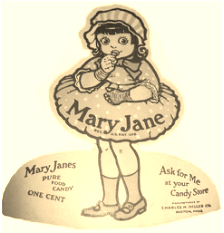

This picture reminded him of his past, the first meeting with his lame wife, Pauline. Drunk, he observed his daughter, scratching a leg while washing dishes. Cholly did not rape Pecola out of lust, but the mixed feelings of sadness, hatred, and care. He represents a “little” person trying to control everyone by spreading his power and ugliness on the members of his family. The man is depicted not so ugly outwardly as morally, the result of despair, laxity, and dissatisfaction in his own life. Cholly’s Projection of PainĬholly is the father of the Breedlaw family and the one who took advantage of his underage daughter. This is an appeal to the invisible forces to find admiration and approval of others, which she failed to receive from people who are usually the closest ones – the parents. Therefore, the young lady starts to blame her brown eyes, which she considers gruesome, for not finding freedom and later becomes convinced her eyes have turned blue.

The rape produced traumatizing psychic experience, destroying her connection with reality. Consequently, a healthy individual cannot be raised in such a toxic environment, inflicting numerous psychological traumas on a delicate child’s mind.

Furthermore, Pecola’s father, Cholly, not only sexually assaulted the girl twice but impregnated her. The girl’s mother disgracefully calls her daughter “little black bitch” and convinces her that she is ugly.

The protagonist grew up in a poverty-stricken abusive family and has consistently observed her parents fighting. Unhealthy Family Relationships as the Cause of Psychological Damages Thus, a caring family is a solid foundation for bringing up an individual who can withstand social pressure. For instance, according to Morrison (2014), when Claudia watches a bunch of boys teasing Pecola, she assaults them. Consequently, in critical situations, Claudia presents herself as a fighter, whereas Pecola behaves passively and vulnerably. The protagonist, however, is facing challenges in relationships with parents, such as incest and humiliation. Claudia, as Pecola, suffers from social pressure and beauty stereotypes, but she is growing up in an adoring and caring family, which makes all the difference for her. Proper Family Upbringing as the Foundation for Raising Strong PersonalitiesĬlaudia and Pecola possess different family backgrounds, which undeniably impacted their behavior in society.
THE BLUEST EYE CHARACTER ANALYSIS SKIN
Thus, even though both of the girls share the same skin color and community they live in, their reaction to social stigmas differs. In other words, Pecola possesses low self-esteem and does not embrace the features of her appearance. According to Morrison (2014), “Thrown, in this way, into the binding conviction that only a miracle could relieve her, she would never know her beauty” (58). On the contrary, the protagonist reliably acts on her craving to realize American excellence benchmarks and aspires to attain the bluest eye. The girl clarifies that she is courageous since she has not learned self-hatred yet, what is a problem of numerous grown-ups within the Afro-American community. For instance, at the beginning of the novel, Claudia destroys her light-skinned dolls out of internalized contempt for white individuals. Pecola and Claudia are both young black ladies and best friends, yet they possess strikingly contrasting opinions about beauty. The Main Characters and Themes Pecola vs. This essay discovers the child’s view of the problems of racism, poverty, incest, and the inability to love. The Blue Eyes not only expounds the cruelty and violence in the life of little Pecola but also explains why it happens. After experiencing several terrifying incidents, such as incest, bullying, death of the unborn child, Pecola becomes mentally ill and makes herself believe her eyes changed to the color of the sky. Living in the world owned by whites, the protagonist believes that her life would be more comfortable if she looked unique: blue eyes become a symbol of the desired appearance. At the heart of The Bluest Eye lies a personal tragedy of an eleven-year-old African-American girl, Pecola Breedlaw.


 0 kommentar(er)
0 kommentar(er)
